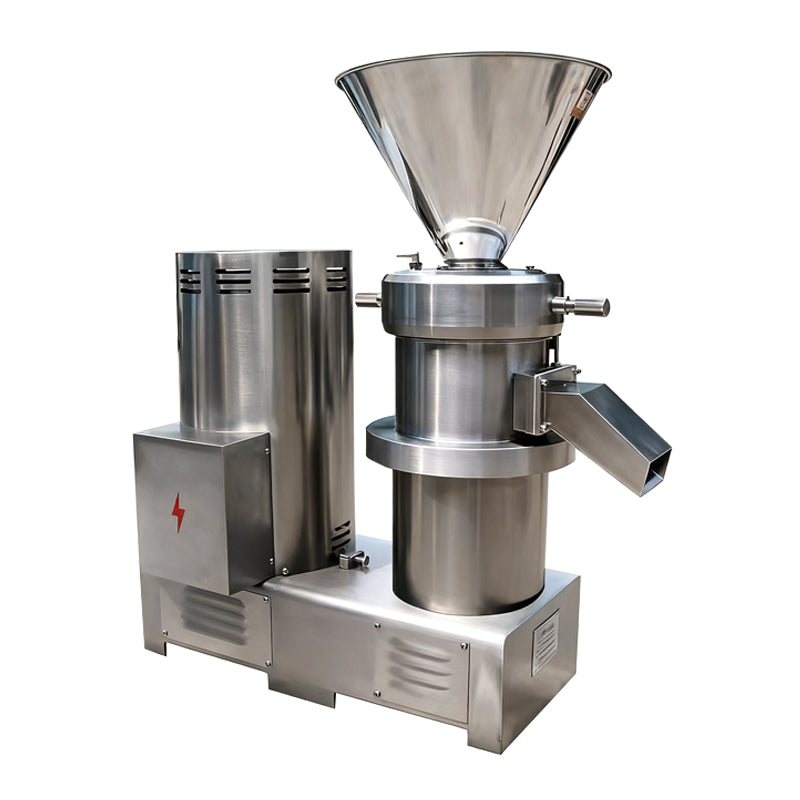
The Secret Weapon for Homemade Additive-Free Sauces! In-Depth Review of Peanut Butter & Sesame Paste Grinder
Share
Have you ever faced these frustrations? Commercial peanut butter is either loaded with sugar or has a rough, grainy texture, always leaving something to be desired when spreading on bread or tossing with salads. Meanwhile, pure sesame paste you crave costs dozens of yuan for a small jar, and you still worry about buying "fake pure products" mixed with other oils. It wasn't until I met the peanut butter & sesame paste grinder that I realized making homemade additive-free sauces is so simple—today, let's talk about this "kitchen treasure tool," covering everything from usage experience to buying guides in one article!
1. Say Goodbye to Commercial Sauces! 3 "Wow" Moments with the Grinder
When I first got the grinder, I just wanted to "try saving some money," but I couldn't live without it after using it once. These three "wow" moments that made me exclaim might be why you need it too:
-
Additive-Free & Healthier, Texture Tailored to You: I used to check the ingredient list repeatedly when buying peanut butter, fearing hidden trans fats and hydrogenated vegetable oils. Now, making it myself only requires raw peanuts/roasted sesame seeds, plus a spoonful of salt or honey for seasoning, and I get pure sauce. Moreover, the grinding fineness is adjustable—grind longer for a creamy texture, or shorter for a slightly grainy one. It understands your taste better than commercial versions.
-
Explosive Cost-Effectiveness, Achieve Sauce Freedom: Do the math and you'll see how cost-effective it is! A catty (about 500g) of roasted sesame seeds costs around 15 yuan, which can make nearly 400g of sesame paste—equivalent to 1/3 the price of commercial counterparts. Peanuts are even better: buy shelled peanuts, peel and roast them yourself, and the cost is cut in half. Now, my family uses it not just for spreading on breakfast bread, but also for tossing cold dishes, making hot pot dipping sauce, and even for baby food supplements. We've completely achieved "sauce freedom."
-
More Than Peanuts & Sesame, Unlock N Sauce Recipes: Don't be limited by its name! This grinder is a "versatile player"—grind dried chili and Sichuan pepper into spicy sauce, which is so delicious with noodles that you'll lick the plate clean; grind almonds and walnuts into nut butter, which is more nutritious than peanut butter on toast; it can even grind red bean paste and lotus seed paste, saving you money on filling when making mooncakes during Mid-Autumn Festival.
2. Must-Know for Beginners! How to Choose a "No-Regret" Grinder
There are a wide variety of grinders on the market, ranging from tens to thousands of yuan. It's easy to be overwhelmed when buying for the first time. Based on my usage experience, keep an eye on these three core points:
1. Structural Design: Prioritize "Split-Type"
Split-type (motor and grinding chamber separated) is more practical than integrated! On one hand, it's easier to clean—the grinding chamber can be completely disassembled for washing, no need to worry about sauce residue moldering in gaps. On the other hand, maintenance is simpler: the belt-driven design produces less noise than direct-drive motors, and it's easier to replace parts later. My JMF-80 split-type grinder can be rinsed and dried after each use, a total win for lazy people.
2. Material: Food-Grade Stainless Steel is the Bottom Line
Parts in contact with food must be 304/316 stainless steel! Especially the grinding discs—poor-quality materials are prone to rusting and chipping, contaminating the sauce. Good grinding discs also undergo reinforcement treatment for higher wear resistance. I've used mine for over half a year, and the grinding discs are still as bright as new, with no impurities in the ground sauce.
3. Grinding Fineness: Choose "Multi-Tooth Adjustable" Models
Beginners shouldn't buy "fixed fineness" ones! Choose models with three adjustable gears: coarse grinding, fine grinding, and ultra-fine grinding, which can achieve from initial crushing to fine sauce in one go. For example, when grinding peanuts, first use the coarse gear for 1 minute, then switch to the fine gear for 2-3 minutes, and you'll get peanut butter as creamy as butter. For sesame seeds, use the ultra-fine gear—the resulting sesame paste can flow in a continuous line with a richer aroma.
3. My Real Usage Diary: From "Kitchen Novice" to Sauce Expert
As a "kitchen novice" who used to burn even noodles, I was nervous when using the grinder for the first time, but found it surprisingly easy to operate:
-
Prepare Ingredients: Roast peanuts in advance (no need to remove the skin, it tastes更香 when ground), rinse sesame seeds, roast until slightly yellow, and let cool for later use.
-
Start Grinding: Pour the ingredients into the grinding chamber, close the lid tightly, first use the coarse gear for 1 minute, then switch to the fine gear for 2-3 minutes. No need to stop halfway—the machine runs very smoothly, and the noise is much lower than a blender.
-
Season & Bottle: While the ground sauce is still warm, add a little salt or honey, stir well, then put it into an airtight jar. It can be stored in the refrigerator for 2 weeks.
Recently, I've also unlocked a "mixed recipe"—mix peanut butter and sesame paste in a 1:1 ratio, dilute with a spoonful of warm water, and drizzle over cold noodles or vegetable salad. It's so delicious that you can't stop eating! My kid loves it too—he used to dislike vegetables, but now with homemade sauce, he can eat an extra bowl every time.
Tip: After grinding oily sauces (like peanut butter), rinse the grinding chamber with a little warm water, then dry it with kitchen paper. This way, there will be no flavor cross-contamination when grinding other ingredients next time~
4. Final Thoughts: A Tool That Makes Life More "Flavorful"
Actually, I initially thought "there's no need to buy a dedicated grinder," but after really using it, I realized it brings not just cost savings and health, but also a "joy of hands-on cooking." Watching ordinary peanuts and sesame seeds slowly turn into fine sauce in the machine, and smelling the aroma filling the house—this sense of healing is something commercial sauces can't provide.
If you also love experimenting with food, or want to provide healthier meals for your family, this peanut butter & sesame paste grinder is really worth buying. From today onwards, say goodbye to additives, and use the simplest ingredients to make the most flavorful sauces!
